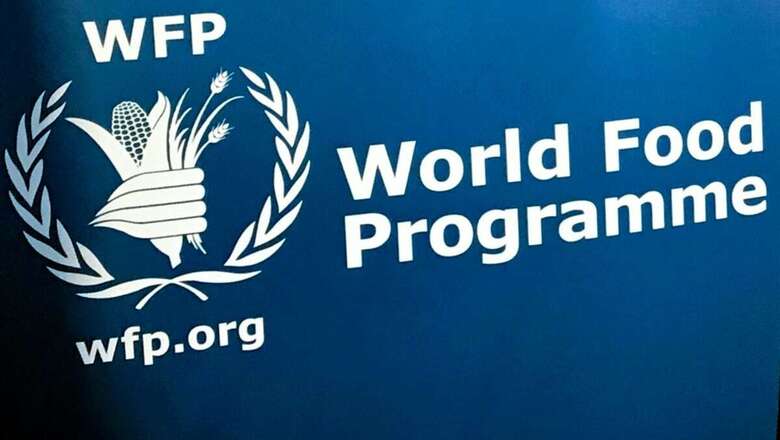
views
The United Nations’ World Food Programme (WFP), which won the Nobel Peace Prize on Friday for its efforts to combat hunger and promote peace, was founded in 1961 at the request of US President Dwight Eisenhower.
The WFP began as an experiment to see if the United Nations system could deliver food aid. Its first disaster relief operation was to help after an earthquake hit in Iran in 1962. It gained permanent status in 1965 and calls itself the world’s largest humanitarian organisation, dedicated to “saving lives in emergencies, building prosperity and supporting a sustainable future for people recovering from conflict, disasters and the impact of climate change”.
It says http://www.wfp.org that, on any given day it has 5,600 trucks, 30 ships and nearly 100 planes on the move, delivering food and other assistance. In 2019 it assisted 97 million people, the largest number since 2012, in 88 countries. During the coronavirus pandemic, the WFP’s logistics service dispatched medical cargoes to over 120 countries. It also provided passenger services to ferry humanitarian and health workers where commercial flights were unavailable.
In 1989, the WFP staged what it says is the biggest humanitarian airdrop in history. Twenty cargo aircraft flew three sorties a day to transport 1.5 million tonnes of food as part of ‘Operation Lifeline Sudan’, in which UN agencies and non-governmental organisations cooperated to alleviate a famine caused by civil war.
The WFP is funded by voluntary donations, mainly from governments but also from companies and private donors. In 2019, it raised $8 billion. It is governed by a 36-member executive board and has 90,000 staff, of whom some 90% are based in the countries where the agency provides assistance. Its executive director traditionally comes from the United States. The current chief is David Beasley, a Republican politician who was nominated by President Donald Trump’s administration and has been in the job since April 2017.
The WFP is one of three UN food aid organisations based in Rome. Its sister bodies are the Food and Agriculture Organization (FAO) and the International Fund for Agricultural Development (IFAD). It says it is currently dealing with six food emergencies besides COVID. These are in the Democratic Republic of Congo, northeastern Nigeria, Sahel, South Sudan, Syria and Yemen.
For more than 50 years the WFP has worked to improve food security around the world, but conflict, climate shocks and economic slowdowns mean almost one in 11 people globally still do not have enough to eat. Here are seven things to know about world hunger:
1. Globally, 690 million people, about 8.9% of the population, go hungry – up by nearly 60 million in five years.
2. The United Nations estimates that over 130 million more people may go hungry in 2020 due to the economic impact of the coronavirus pandemic.
3. A quarter of the world’s population does not have reliable access to safe and nutritious food. In Africa, half of the population faces shortages.
4. Though Africa has the highest number of people struggling to access food, Latin America and the Caribbean are seeing the fastest rises.
5. Healthy food is unaffordable to many, especially the poor, in every region of the world. Around 57% of people in sub-Saharan Africa and Southern Asia cannot afford a healthy diet.
6. Worldwide, women are more likely to go hungry than men, with the situation exacerbated by laws and cultural norms that restrict access to property, equal pay and health care.
7. Despite goals to achieve zero hunger by 2030, the United Nations estimates that the number of hungry people will rise to 840 million in five years if current trends continue.
Read all the Latest News and Breaking News here
















Comments
0 comment